
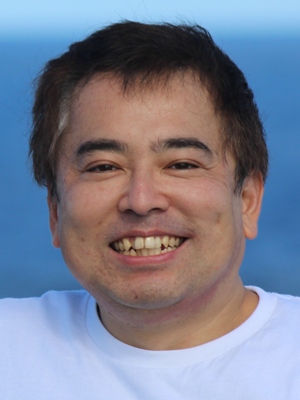 Co-chief Scientist (Shore-based)
Yuki Morono
JAMSTEC /JPN
Co-chief Scientist (Shore-based)
Yuki Morono
JAMSTEC /JPN
Any life beyond the limit?Nov. 21, 2016
Can you imagine life in the temperature above the boiling point of water? One of our goals for the IODP Expedition 370 (T-Limit) is to look for deep life in such high temperature environments. How can we find them? We are trying to achieve this goal by a combination of several approaches. First, we try to find microbial cells in deep subseafloor samples with microscopes. In fact, this is something like “Finding a needle in a haystack”, because cell number is significantly low in the sediment sample close to the limit of the deep biosphere. Our current limit to quantify for microbial cells is as low as a few to 10 cells per cubic centimeter of sediment, corresponding to a few sand grains in an Olympic-sized swimming pool with minerals (not water!) without any contaminations. This is one of the reasons why we need to process our samples under the super-clean environment at KCC.
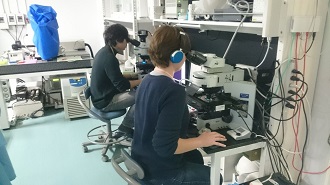
A shore-based microbiologist Emily Whitaker (right) and a shipboard microbiologist Donald Pan (left)
are trying to find microbial cells and virus-like particles on a microscope, respectively.
Second, it is currently a powerful took to detect microbiological signatures from the environmental DNA extracted from sediment core samples (see Margaret Cram’s blog post). This is also a big challenge, since DNA is far smaller molecule than microbial cells, and difficult to be extracted from very few numbers of the deeply buried microbial cells.
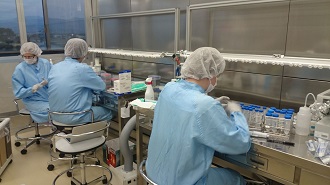
Shore-based microbiologists Tatsuhiko Hoshino, Margaret Cram, and Emily Whitaker working on DNA
extraction and cell separation in the super-clean room at KCC.
The third, it is a real challenge for us to cultivate them at the high-temperature and high-pressure condition near their living environment. Below is a picture of the high temperature and pressure incubation system that we have started cultivation of deep microbial life using sediment core samples transported from the Chikyu. We look forward to seeing some deep microbes that can grow at such extreme conditions!
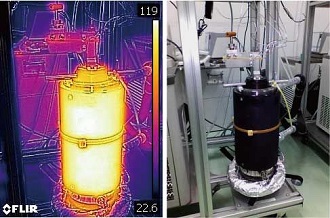
High temperature and pressure incubation system operating at 125oC, 550 atm.
On November 11, the Expedition 370 shipboard scientists have disembarked the Chikyu and accomplished their 2 months offshore activity. The Expedition 370 onshore team, which was started after 2 weeks since the departure of Chikyu for drilling, will continue the sample processing and analytical work at KCC until November 23. Although we are approaching towards the end of the IODP T-Limit Expedition 370, our challenge of science will continue.
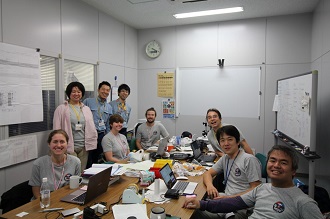
The Expedition 370 shore-based team with Masaru Yasunaga (curator, left with a blue shirt)
and Yuichi Hanada (lab technician, right with a blue shirt).
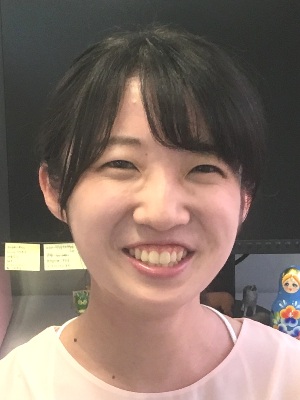 Paleomagnetics (Shipboard)
Natsumi Okutsu
AORI, Univ. Tokyo /JPN
Paleomagnetics (Shipboard)
Natsumi Okutsu
AORI, Univ. Tokyo /JPN
What a happy day!Nov. 11, 2016
11th November - it was a day with full of joy - Chikyu arrived at the port, and finally the shipboard team and the shore-based team met physically for the first time, and had a joint meeting! I think it was one of the highlight of this expedition. Also, the shipboard team disembarked after two months cruise (and enjoyed beer). Of course everybody pleased with it (from photo, you can see how much we were happy!), but probably I felt more happiness than any other. It was because, I had to leave Chikyu during the cruise two weeks before the end due to a medical reason. While I was onboard, there was a lot of work to do; sampling, measurement, writing reports… and sometimes it was hard, but on top of them, I felt so much excitement and fun at the same time. So, leaving Chikyu was a hard time for me (though I could have a helicopter flight for the first time in my life). That was why I felt so happy when I could see everybody and get onboard, again. Our cruise has finished and Chikyu is going to start next cruise. I would like to say “otsukare-sama”, the Japanese word used when people have done work, to all the shipboard crew. However, Exp. 370 is still ongoing! The shore-based team is now working on various analyses at KCC everyday. To the shore-based team, I would like to say “ganbare”, Japanese word used to encourage people. I am looking forward to hearing an exciting news from them!
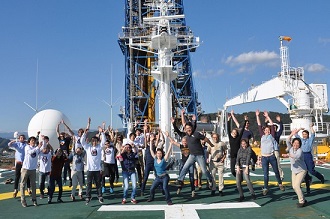
The shipboard team, shore-based team and staff member… everybody jumped with joy!!
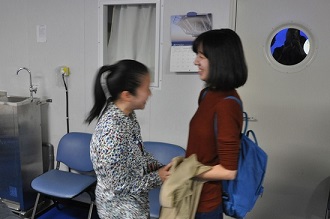
I (right) and the physical property specialist, Nana Kamiya (left) shared the joy of seeing each other onboard, again.
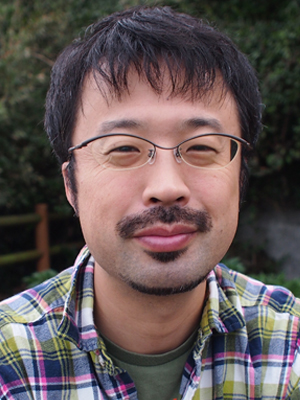 Microbiology (Shipboard)
Hiroyuki Imachi
JAMSTEC /JPN
Microbiology (Shipboard)
Hiroyuki Imachi
JAMSTEC /JPN
New microbes and wonderful peopleNov. 7, 2016
Time flies. This wonderful drilling cruise will end in just a few days. During the Expedition 370, I have successfully obtained very nice samples from the decollement zone. After disembarkation at Kochi, I will go back soon to my home laboratory and start cultivation for anaerobic hyperthermophiles from the invaluable core samples. What kind of new microbes that live at the edge of the deep biosphere will I get? I cannot wait for seeing new microbes!
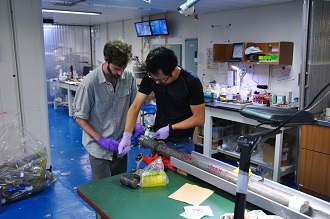
Shipboard microbiologists Kyle Metcalfe (left) and Hiroyuki Imachi (right) cut whole round core.
Speaking of new, I had many new and lovely encounters on this expedition. All participants of the IODP expeditions are selected from IODP member countries. Therefore, most of the participants meet each other for the first time at the beginning of the expedition. Twenty-six scientists are participating as onboard scientists, and only 9 of them I have met before. On this Chikyu’s expedition, I am assigned as the leader of the microbiology team. Almost all members of the shipboard microbiology team meet each other for the first time. This situation made me first very nervous because I worried if I could have a good communication with them. However, all the members have a very nice personality, always give constructive comments and support me. Here, I would like to express my gratitude to the members of the shipboard microbiology team, Lorenzo Lagostina, Kyle Metcalfe, Donald Pan, Maija Raudsepp, Tina Treude and Bernhard Viehweger. I will never forget all you guys and this fantastic cruise!
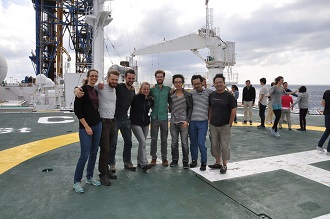
Onboard microbiology team and co-chief scientist Fumio Inagaki.
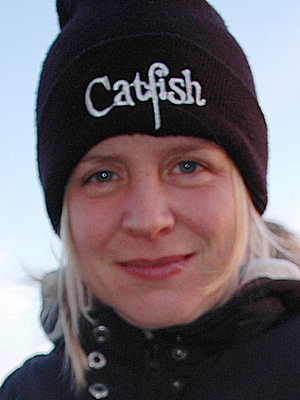 Biogeochemistry (Shipboard)
Tina Treude
UCLA /USA
Biogeochemistry (Shipboard)
Tina Treude
UCLA /USA
Imagine Microbes - RadioactiveNov. 7, 2016
"I'm waking up to ash and dust
I grate my core and I crimp my glass
I'm injecting in the chemicals
Welcome to the rad van, to the rad van
Welcome to the rad van, to the rad van
Whoa, oh, oh, oh, oh, whoa, oh, oh, oh, they're radioactive, radioactive"
My contribution to the expedition is the measurement of microbial activity with radioisotopes. In the deep biosphere the abundance of microbes is very low, food is scarce and there is little water. All these factors make it challenging to detect microbial activity with conventional methods, such as quantifying the accumulation of metabolic end products. The activity of microbes per cubic centimeter sediment is so low that not sufficient products would accumulate, even after weeks of incubation, to be quantifiable with normal techniques. Instead I use a little trick. I feed microbes radioactive substrates (radiotracers), which they convert to radioactive end products during metabolic processes called methanogenesis and sulfate reduction. Even very small amounts of radioactive end products are detectable.
But I can't simply inject those radiotracers into sediment whole round cores. The cores are too hard and the radiotracer, even if it would be successfully injected into the core, would not mix well into the microbial home - the pore space. Instead I grate the core with a knife like a cheese to create a mixture of small flakes and powder, to which I add a seawater solution. All of this has to happen in an oxygen-free glove box, because methanogens and sulfate reducers do not like oxygen at all. During all procedures, I have to work super clean to prevent any contamination with shipboard microbes. My final sample consists of sediment slurry, crimped into a glass vial with a rubber stopper. After I added seawater to the sediment, I sometimes imagine that the microbes, which were locked up in this relatively dry environment for probably million of years, are having a gigantic pool party with cocktails.
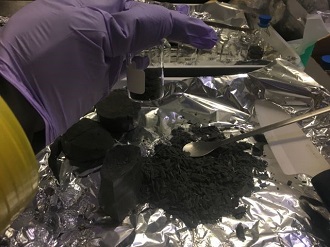
A sediment sample is prepared for radioisotope incubation.
When this part of my work is done, I move my samples to the radioisotope van to inject the radiotracers. The rad van is located outside on the lab roof level of CHIKYU. For safety reasons, it is isolated from the rest of the ship. This makes my work sometimes lonely. But I always bring good music and audio plays with me that I listen to in the van. Working with radioisotopes also requires some safety protocols. I need to wear different shoes, sign in and out of the van, wear a dosimeter to monitor exposure to radioactivity, and precisely record the use of radioisotopes. Luckily, the radioisotopes I work with (14C and 35S) are relatively weak beta emitter. I sometimes work with chemicals that I find more worrisome such as carcinogenic solvents or concentrated acids. In the end it is all about working safely.
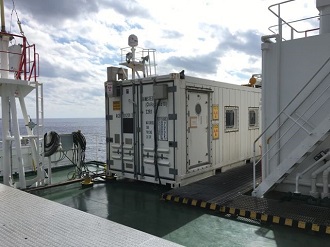
The radioisotope van on the lab roof level. Radioisotope work on CHIKYU is a good excuse to get some fresh air.
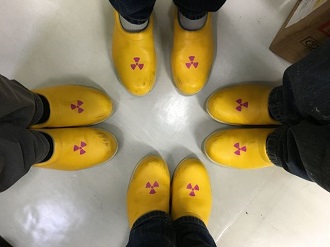
Fancy safety shoes in the radioisotope van.
Once the radiotracer is injected, the sediment slurries are moved to incubators. I incubate the samples at different temperatures that are close to what the microbes were used to in their original environment. On board my highest incubation temperature is 95°C. This is close to boiling point. But we think that some microbes like it extra hot, so we give them what they want.
After ca. 10 days, incubations are terminated by the addition of chemicals to the samples, which fix the metabolic end products and kill the microbes. Sorry microbes, party is over! Well, at least I hope you had a blast before you kicked the bucket ;-) Final analyzes of the sample will happen onshore in the laboratories of my collaborators in Germany and Denmark. We all can't wait for the data to see if we detect microbial activity in these sediments from the deep, hot environment.
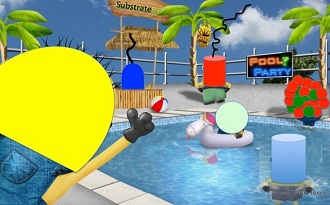
Deep biosphere microbes are having a blast after water addition.
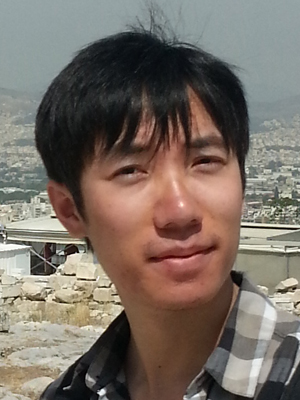 Microbiology (Shipboard)
Donald Pan
JAMSTEC /JPN
Microbiology (Shipboard)
Donald Pan
JAMSTEC /JPN
Oct. 29, 2016
Two days ago, the drillers finished installing a second well casing into the borehole. Coring resumed after the drillers re-entered the well with the drill pipe. The first time the pipe entered the hole in September, all the scientists were thrilled while watching the event unfold from the underwater TV.

Since then, the scientists have become accustomed to re-entry. Nowadays, there is not as much interest in pipe entry as at the beginning of the expedition. However, the technical feat of getting the pipe into the hole is still amazing to me.
We are floating on the surface of the ocean trying to fit the end of a long pipe into a hole at the bottom of the ocean. Some have said that this is like trying to pass a thread through the eye of a needle. Let's see if this is true…
The well has a 20 inch (508 mm) outer diameter and 18.563 inch (471.5mm) inner diameter. The drill pipe that is sent down to the hole has a diameter of 6.625 inches (168.275mm). However, the drill bit at the end of the pipe is slightly larger with a diameter of 11.4375 inches (or 290.5mm).
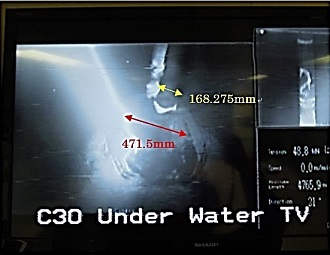
So we have to get the 290.5mm diameter drill bit into the hole, which is 471.5mm in diameter. That seems easy enough.
However, the hole is located at bottom of the ocean. Therefore, we have to pass through 4.765km of water before we are even near the hole. That means we need to have a pipe at least 4765m long extending from the Chikyu to the hole.
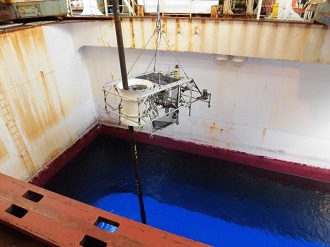
Only a couple of meters of pipe shown here.
Already, it seems like the process is a lot more difficult than putting a threat through the eye of a needle. How much more difficult? Let's try a simple comparison using a Japanese 5-yen coin.
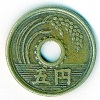
The hole of a 5-yen coin is 5mm in diameter. Let's pretend the 5-yen-coin's hole is the well-hole. How small would a drill pipe going through the 5-yen coin have to be?
| = |
|
x=1.78mm
The mini-pipe would be 1.78mm in diameter. The drill bit is slightly larger than the pipe (290.5mm), so that would make the mini drill bit 3.08mm in diameter.
A close approximation to a drill pipe with drill bit would be a toothpick, which is around 2mm in diameter.
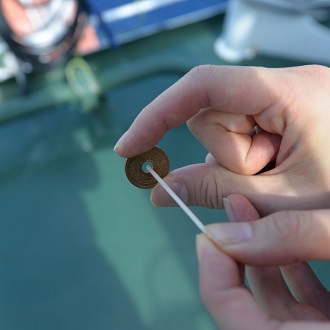
So if my toothpick were the drill pipe, how far away would my coin have to be in order to be proportional to the distance of the well hole at the bottom of the sea?
| = |
|
x=56.6m
The coin would have to be 56.6m away!
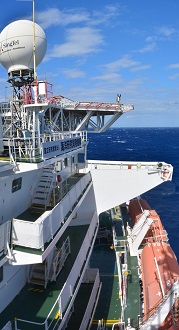
There’s a 5-yen coin in my hand…can you find it?
I would need use a toothpick 56.6m long and try to get the tip through the hole. That would be like being on the top of the Statue of Liberty and trying to place that toothpick through the 5yen coin at the foot of the statue. But this comparison isn't perfect as the Statue of Liberty is only 46m tall…
From a 56.6m distance, the hole in the coin is only slightly larger than 1 pixel. In conclusion, I think it is a bit harder than threading a needle. Fortunately, the Chikyu has some amazing technology to help the re-entry such as an underwater camera so that the drillers can see where pipe is and also thrusters that keep the ship stabilized even during bad weather. Everything on the Chikyu is run so smoothly that the routine processes seem ordinary. But when I step back and really think about the scale of the operations, I am awed by the amazing feats of modern scientific drilling.
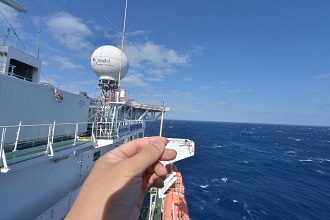
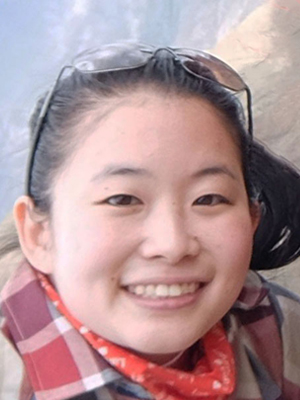 Physical Properties (Shipboard)
Nana Kamiya
Nihon Univ./JPN
Physical Properties (Shipboard)
Nana Kamiya
Nihon Univ./JPN
Oct. 29, 2016
My name is Nana and I join this expedition as a member of Physical Property Specialists. During Expedition 370, there are only two Physical Property Specialists (Takehiro and me) and one Paleomagnetist (Natsumi). Since both groups consist of few members, the Physical Properties Team was combined with Paleomagnetist, forming a new team called “Team PPP”. The main task of the Physical Property Specialist is to measure the physical property of sediment, such as density, porosity, electrical resistivity, P-wave velocity, thermal conductivity and so on. From these factors, we evaluate physical condition of sediment. For example, electrical resistivity and P-wave velocity show the structural characteristics of sediments, and the temperature in situ is estimated based on thermal conductivity. Physical properties of sediment provide us important information for understanding the physical state of deep area. Now, that casing installation has completed which is an operation to keep the bore hole stable, the cores will be coming soon. It also means that coring to the basalt basement has started. Will we find a fracture zone? How will physical properties change when we go deeper? My excitement and interest go on deeper, too.
A few days ago, we took group photos on the helideck since Microbiologist Tina came to the Chikyu. The wind was a little strong but the weather was nice. After taking a whole group photo, we took each team photo, co-chiefs photo, ladies photo, and so on. Since we are separated by 12-hours shift time and each different task, it is rare for us to get together, except the joint meeting time. We enjoyed spending a good time with all of the members.
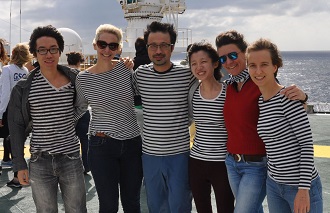
Surprisingly, 6 scientists put on same pattern T-shits. Black and white stripes are common all over the world. (Photo: Yusuke Kubo)
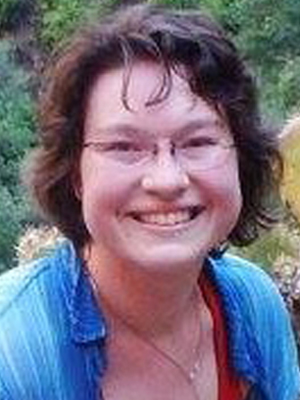 Inorganic Geochemistry (Shipboard)
Kira Homola
Univ.Rhode Island /USA
Inorganic Geochemistry (Shipboard)
Kira Homola
Univ.Rhode Island /USA
Easy goingOct. 26, 2016
The D/V Chikyu is 24-hour-operations ship. This means that no matter the time of day, work is always happening. We have a number of different teams on board, each with different peaks in activity. The drilling crew works hardest during core collection, and while preparing and maintaining the hole (cleaning the hole to make sure it doesn’t collapse, installing casings to keep it open, and sending the drill-string up and down with the right drill bits and equipment for each operation). The science party works hardest once cores are collected and on deck, where our individual groups have a range of responsibilities. There is a specific order of operations for scientific analyses, known as coreflow, that determines how core samples transition between science labs. Some of the science work gets completed quickly, while for other groups there is a delay until samples can be collected from the cores. It can often take several days after a core has been collected until processing and analyses are completed. The third group on board, in charge of marine operations, are continuously busy keeping the vessel ship-shape, in position, and feeding and cleaning up after a hoard of hungry scientists and crew.
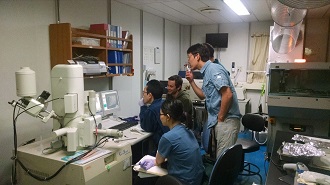
The sedimentology team enjoying their first opportunity to examine samples with the Scanning Electron Microscope (SEM).
Forty-one days into our 60 day expedition, this round the clock work and flow of samples can become overwhelming if morale is not kept lighthearted with “extra-curricular” activities. In the last 10 days, the drilling crew has been extremely busy installing our second casing, and getting lined up to resume coring. During this time, the science party has been busy completing analyses and processing all the fascinating data we have been collecting. But of course, we also take advantage of this slightly lighter work load by having a little fun! The highlight of shipboard entertainment has been our science party & lab technician table tennis tournament. Starting with 5 league teams, narrowing down to the Sweet-16 round, and further progressing to the quarter finals, we have now eliminated all but the top 4 ping-pong players onboard. Each round, the lounge area is transformed into a makeshift sports arena, with the furniture pushed back and filled with ranks of scientist cheering for their favorite player…
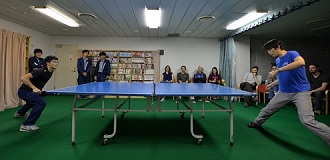
The Sweet-16 match between technician Masatoshi “Cat-Punch” Edo and sedimentologist Yuzuru “Tiger-Paw” Yamamoto. Technician and scientist supporters avidly follow the action! Photo Credit: Masa Kaneko.
We have many talented female scientists onboard during this expedition. In our off-shift time, we have assembled an all-skill-levels-welcome choral group! Practice occurs on ladies’ day in the Jacuzzi (this may be part of the appeal)! Currently, we are working on some creative parody songs that incorporate our favorite aspects of the expedition. Concert times are yet to be determined…
Of course, the culmination of relaxation onboard comes during beautiful sunrises and sunsets, when most of the science party enjoys a chance to get outside and experience the fresh air. These recent nice weather windows also provide an opportunity to blow off a little steam by playing “sun-ball” and taking advantage of the science team group photo to slip in a jumping pic.

The science party jumps for joy at the prospect of resuming coring operations! Photo Credit: Yusuke Kubo.
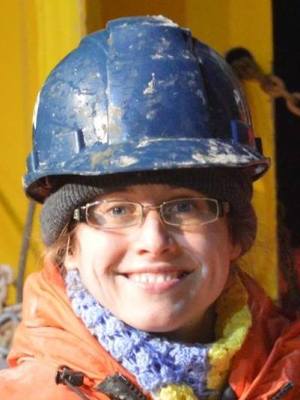 Microbiology (Shore-based)
Margaret Cramm
Univ. Calgary /CAN
Microbiology (Shore-based)
Margaret Cramm
Univ. Calgary /CAN
Who lives down there?Oct. 25, 2016
On the T-Limit Expedition 370 we are exploring the extent of deep, hot life. As a member of the shore-based science party, I am first introduced to a sediment sample from this deep hot environment when it is helicoptered from the Chikyu to the Kochi Core Center and lands in the -80°C freezer in the super-clean room where I spend most of my time. I work with Tatsuhiko Hoshino and together we are Team “Frozen”. A primary task of ours is to extract DNA from the sediment recovered during Expedition 370. Extracting the DNA is important because it allows researchers to identify what species of microbes are living way down, hundreds of meters below the surface of the sea floor, in the deep and hot biosphere.
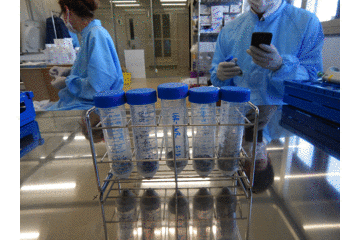
Movie 1. DNA Extraction process
Below is an overview of the DNA extraction process. We start with a hard chunk of sediment and finish with purified DNA.
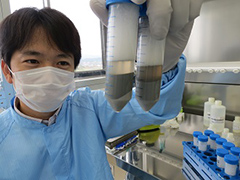
Photo 1. Tatsuhiko Hoshino admiring the DNA extractions.
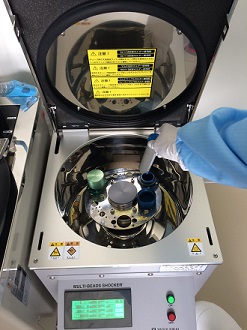
Photo 2. This is the beadbeater. A sample is being placed in one of the tube holders for shaking.
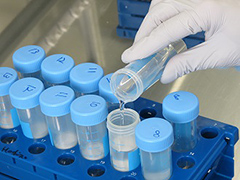
Photo 3. The DNA is in solution after the inhibiting substances have been cleared away. The filter inside the collecting tube catches the DNA while the contaminates pass right through.
Step 1. Crush sediment into a powder. This is done with a hammer, a mortar and a pestle. Crushing the sample exposes cells that may be trapped inside the rock. The number of cells found in deep sediment is very low so we need to extract DNA from every single cell.
Step 2. Destroy (lyse) cells. The DNA is protected inside the cells. We need to break the cell wall and membrane(s) to release the DNA. Little beads are added to the sediment sample and put into the beadbeater which rapidly shakes it. The force of the shaking beads tears open the cells releasing the DNA. Detergents are also added that help break down the cell membrane.
Step 3. Clean away inhibiting substances. Solutions are used to clear away humic acid and components of dead cells leaving behind clean DNA.
Step 4. Capture DNA. The DNA is captured on a filter while all other contaminants pass right through.
Step 5. Collect DNA. The DNA is washed from the filter. We now have clean DNA in solution!
Once we have extracted the DNA, we will sequence it. Our sequencing will target a specific gene in the microbial genome ? the 16S rRNA gene. The 16S rRNA gene is the genetic marker used by microbial taxonomists to identify microbial species. It is stable and shared by all members of the same species so it is particularly useful for this purpose. If we know the DNA sequence of the 16S rRNA gene, then we know the species!
Extracting DNA can be long and monotonous, but the information that we gain from it is valuable for answering questions about which species are living hundreds, sometimes thousands, of meters below the sea floor. Humans are only beginning to understand the strange and extreme life that lives deep within the earth where the pressure is high, the temperatures are hot, and nutrients are limited. Species identification, made possible through DNA extraction, can give us clues as to who can live under these extraordinary conditions.
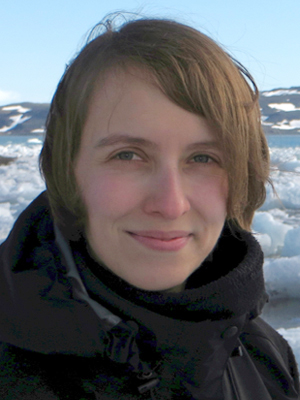 Inorganic Geochemistry (Shipboard)
Susann Henkel
AWI, MARUM /DEU
Inorganic Geochemistry (Shipboard)
Susann Henkel
AWI, MARUM /DEU
Drop by drop, meter by meterOct. 19, 2016
My name is Susann and I am in the Inorganic Geochemistry Team together with Justine, Kira and Art. Our main job onboard is to squeeze pore water out of parts of the sediment core and to give all sample requesters their share for the specific analyses that they want to perform on shore. That sounds like an easy job, but imagine you find yourself with a total of 5 ml of water and there are 13 (!!!) empty vials to be filled! Each drop is precious and may enable us to run one of the more than 20 different analyses that are anticipated. Aside from sampling, we also perform a wide range of chemical analysis onboard Chikyu and the initial data give us a first idea of microbially mediated and abiotic reactions and of the types of mineral alterations that occur at depth.
After squeezing, the sediment is so compressed that it resembles a dry and very hard piece of rock that we call squeeze cake (as was mentioned by Majia before). Since there are also several requests for those, some scientists (including myself) literally get their “slice of the cake” to perform solid phase analyses.
At the moment we are not receiving three or four new cores during each shift because the drillers are currently installing a second casing to stabilize the borehole for its future use as a temperature observatory. This gives us the opportunity to process and plot data, show latest results to the other members of the science party and get together for interesting and “ausschweifende”* discussions. Since each scientist onboard has a different background, this commonly ends up in “light bulb effects” and really boosts our excitement for science.
Last but not least I need to mention that we all have the uttermost respect for the skills of the team on the rigfloor. The day before yesterday I watched in our most popular TV channel, the underwater camera, how the drill bit was lowered meter by meter and was brought back into the borehole. If you have ever tried to put a threat through the eye of a needle while you were sitting in a rollercoaster, you can easily imagine how challenging this operation is: the drill bit attached to a 4.7 km long pipe needs to be positioned precisely over a 22 inch borehole at the bottom of the ocean ? despite wind and currents that affect Chikyu. Even if Chikyu has an exceptional heave compensator and dynamic positioning system that works 24 hours to keep us at the same spot, the nautical and drilling crew is clearly pushing the limits.
*I was looking for this expression in English but it doesn’t seem to exist. It´s a German word that describes something growing bigger and bigger. With respect to discussions it can be translated as “ending up somewhere where you initially didn´t plan to go” (without having a negative touch).
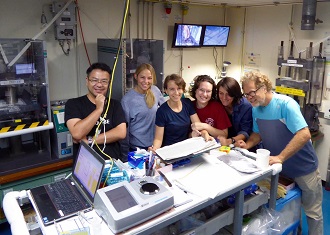
Photo 1. The geochemistry team visited by the two of the co-chiefs. From left to right: co-chief Fumio Inagaki, Justine Sauvage, myself (Susann Henkel), Kira Homola, co-chief Verena Heuer and Arthur Spivack.
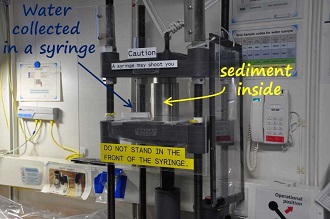
Photo 2. Pore water squeezer in action. If too much pressure builds up in the syringe, it may be “shot” into the room which is why there is a warning and a plexiglas cover. Safety first!
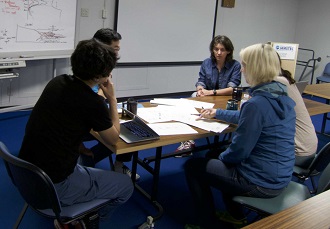
Photo 3. Co-chief Verena Heuer discussing data with organic geochemists.
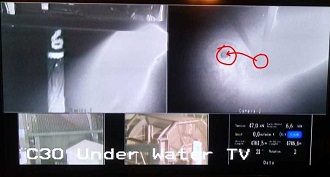
Photo 4. The most popular TV channel shows what´s going on 4.7 km below the ship: The drill bit (right red circle) needed to get into the hole (left red circle).
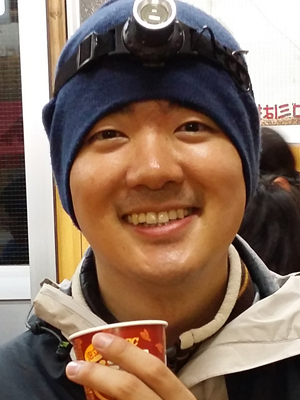 Sedimentology (Shipboard)
Kiho Yang
Yonsei University /KOR
Sedimentology (Shipboard)
Kiho Yang
Yonsei University /KOR
Tips for abundant life during Chikyu expeditionOct. 17, 2016
IODP Expedition 370 is second time to join the D/V Chikyu cruise for me. Before this expedition, I’d joined the NanTroSEIZE project III (IODP expedition 348) on Nov. 2013 to Jan. 2014 as a sedimentologist. During the expedition, I’m observing and analyzing minerals in sediments using various kinds of instruments.
Here’re two groups of onboard scientists, based on onboarding experiences. Like Co-chiefs ? Inagaki-san, Verena ? some have many times of onboard experience, but for many of them, this is the first onboard experience. Actually I just got two-times of onboarding experience. In my experience, some things are similar but others are different than the first time. Therefore I want to share my impressions of my second expedition of the Chikyu today.
The biggest different thing was the way of embarkation. For the first expedition, I arrived at Chikyu using a chopper, but this time I boarded the vessel at Shimizu harbor. In my case I’d prefer embarking Chikyu from the harbor. Because it makes me more excited to realize the expedition is starting. On the other hand, flying in a helicopter was a good experience, too. Who can easily get a chance to take chopper? Therefore scientists who have never experienced a helicopter ride, I recommend to use chopper for your future expedition, if you have the chance!
Another difference is the weather. It was colder than now because the previous expedition started in November and ended in January. By the way, at this time, Expedition 370 started in September and the weather still feels warm in October. Even now, the temperature at night is at 23 degrees Celsius. Currently, my hometown in Seoul, Korea is around 10 degrees Celsius. I didn't bring my winter clothes here, so I worry a little bit about returning home when I finish the expedition.
Now, I will give you some tips for daily life on the Chikyu. There are two things that make me feel better on board. One is the capsule coffee and the other is training suites.
There is a capsule coffee machine in the lounge next to the library. While working hard during the middle of the night, having a cup of coffee makes me feel good. Of course the Chikyu already provides some coffee, but “the one” suit for my preference will be great help and cheers me up in my busy life. The capsule coffee what I prepared here are a present from my girlfriend just before I joined in this voyage. I would like to convey the greetings of thanks (XD). With prepared capsules are going down every day, it feels like the expedition is heading towards the end of the voyage.
The other is a sports suit. I've been exercising almost every day, since I prepared this. In my memory, I didn't bring training suits at the previous expedition, I was constrained to exercise at that time. Every meal on the Chikyu is very tasty and various fruits and desserts are always prepared (especially cheese cake!!). Furthermore, the lack of daily exercise leads to making it easy to gain weight. To stay healthy, I have to eat less meals or exercise, but I can't eat less. (So delicious~! :p). So I started exercising.
Surprisingly, there is a large variety of sports equipment in the Chikyu's gym. Treadmill, dumbbells, bikes, and so on. I try to exercise almost every day, and when I go to the gym, I frequently meet gym colleagues. Let me introduce their names proudly: Kira, Kyle, and Florence! We are good exercise mates. Now, the voyage is halfway over, and there are only about 4 weeks left. Is there anyone who worries about gaining weight thanks to nice meals? Then, get your sports suit and sneakers right now and exercise with us!
These are my tips for life on board the Chikyu. I really hope it’s good advice for those of you who will be involved in one of the future expeditions.
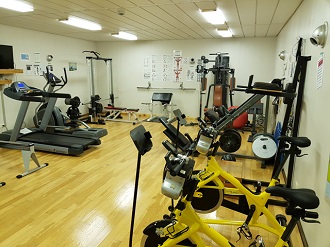
Photo 1. The gym has a large variety of sports equipment.
The only difference between the ordinary gyms is that there are no mirrors on the wall.
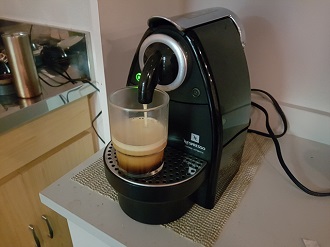
Photo 2. A capsule coffee machine is available in the lounge, and I can’t wait to enjoy my coffee!
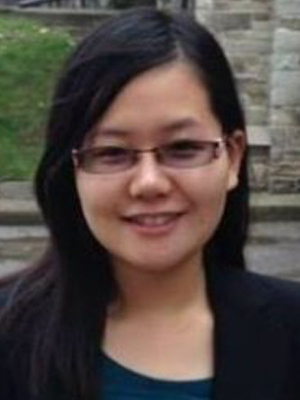 Sedimentology (Shipboard)
Man-Yin Tsang
Univ. Toronto /CAN
Sedimentology (Shipboard)
Man-Yin Tsang
Univ. Toronto /CAN
1 core, 31 hungry scientistsOct. 14, 2016
We are hungry scientists - hungry for data, hungry for samples. We only have one core to share among 31 shipboard and shore-based scientists, and we would like to preserve some sections for archive in the Kochi Core Centre as well. It is critical to design work flows that allow the most effective use of every inch of a core.
Shortly after a core arrives, with the aid of X-ray CT images, the Co-chiefs decide which sections of the core will be split for geologic studies, and which sections will become whole-round samples.
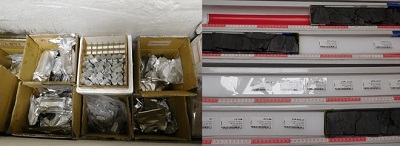
Photo 1. Our nicely packed samples in the -20°C refrigerator
Photo 2. Cores for lithology description and missing intervals (they become whole-round samples)
Whole-round samples are usually for environment- and time-sensitive studies such as microbial culturing, gas analyses and porewater squeezing. Samples that go to porewater squeezing can be an example of our effective workflow: the inorganic geochemists (Art, Kira, Justine and Susann) squeeze the sediment for porewater, and after they measure the concentrations of major ions, I can use their residue for isotope analysis; part of the squeezed sediment will go to Susann for mineral extraction, and then I will use her extract for more isotope analysis. There are careful considerations on what chemicals to add so early steps will not affect later measurements. Clear labelling and documentation is essential to track everything that has happened to a sample.
The split sections become the working half and the archive half. With the working half, structural geologists (Yuzuru and Satoshi) measure the structural features, physical property specialists (Takehiro and Nana) measure the physical characteristics and the paleomagnetist (Natsumi) makes small sediment cubes for paleomagnetism studies. Then the working half is open for 21 kinds of smaller-scale sampling. For example, Hayley (the ash enthusiast) targets volcanic layers, Kiho (the clay devotee) gets pieces of mudrock, and I (the sulfur addict) am interested in pyrite nodules.
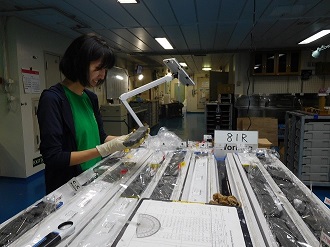
Photo 3. Natsumi takes samples from the working half for paleomagnetism studies
The archive half will come to the sedimentologists (Stephen, Kiho and me) for lithology description. A challenge to us is that lots of core sections become whole-round samples and will never appear in the archive half or the working half. So how do we know the lithology of the missing intervals? Luckily the organic geochemists (Flo, David, Masa, Hayley, Bernhard) and microbiologists (Hiro, Donald, Lorenzo, Kyle, Maija) always save their sample residues for us, so we can have a peek into the missing intervals.
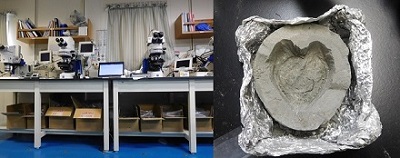
Photo 4. Below the sedimentologists’ work bench are sample residues from different teams
Photo 5. Got some love from the microbiologists!
Our precious core disappears in front of us quickly ? it becomes different types of samples. Data from these samples will enhance our understanding towards the deep biosphere. Thanks to the amazing coordination between every scientist, slim cores from Hole C0023A support the study of the deep biosphere from physical, chemical, biological and geological perspectives.
Now after all the sample preparation steps, we become really hungry. Time to have some awesome food from the Chikyu kitchen!
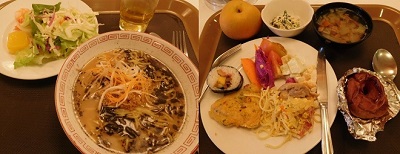
Photo6 & 7: The food on Chikyu greatly exceeds my expectation :D
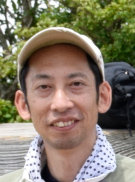 Sedimentology (Shipboard)
Satoshi Tonai
Kochi Univ. /JPN
Sedimentology (Shipboard)
Satoshi Tonai
Kochi Univ. /JPN
Working in the whole round core kitchenOct. 13, 2016
Expedition 370 is my first IODP expedition. I belong to the team of sedimentologists and my tasks include observing core as it comes on deck, watching CT-images to help decide how to split the core and then the visual description of geological-structures within the core.
Cores arrive at the surface (about 9.5 m maximum length) and are carried from drill floor to the core cutting area and then cut into several sections, each less than 1.5 m. Core is then taken to a special room containing with an X-ray CT imager. The X-ray CT image of cores is powerful for drilling research. From X-ray CT imaging, we get 3D information about core condition (e.g. with or without cracks), general lithology, and general geological structures without having to cut the core or disrupt it. For microbiologists and geochemists, selecting uninjured samples from cores is critical to avoid the effects of contamination by seawater and drilling mud. For sedimentologists, petrologists and structural geologists 3D information gained from cores is useful for understanding lithology and geological-structures during visual description also.
After X-ray CT imaging or visual core description, many samples are taken from the core, in response to sample-requests made by scientists and also for the many analyses that are needed on-board. So far, samples and analytical results during this expedition have been managed by the curator, Masaru Yasunaga.
In fact, Masaru and I worked in the same laboratory during our undergraduate and master’s program more than 10 years ago. We researched the Cenozoic tectonics of western Kyushu, Southwest Japan. After finishing the program, he got a job as a curator on the Chikyu and has worked here since then. I have said to him many times “someday I’ll be going on the Chikyu with you”. Finally, at last, I am carrying out this promise. Throughout the expedition so far, he has always looked busy with his curator’s work. He is managing a surprisingly large quantity of samples and data very quickly. Sampling and analyses on board has gone well; many very complex sample-requests have been processed. I am proud of his great curator’s work and enjoyed working with him during this expedition, and seeing him at work.
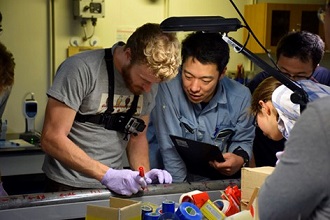
Photo 1. Curator Masaru Yasunaga (right) manages core sampling by microbiologist Lorenzo Lagostina (left). (Photo: Satoshi Tonai)
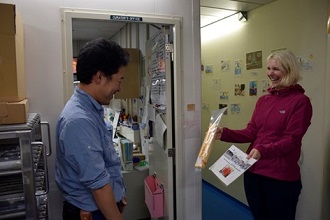
Photo 2. Florence Schubotz (right) gave a thank-you card and “a special sample” from the Organic Geochemist Team to Masaru (left) on the day of his crew change. Their sample requests are very complicated; each sample gets split into many more sub-samples that must all be managed and stored separately. (Photo: Satoshi Tonai)
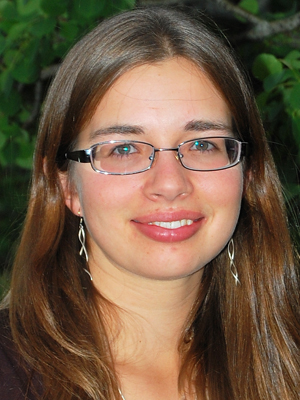 Microbiology (Shipboard)
Maija Raudsepp
Univ. Queensland /AUS
Microbiology (Shipboard)
Maija Raudsepp
Univ. Queensland /AUS
Working in the whole round core kitchenOct. 12, 2016
The main job of Exp, 370’s microbiology team is processing whole round core sections. Processing whole round core is a bit like working in a busy kitchen. You need to work fast, be very clean and have fun with your job. First, based on the image of X-ray CT scan, the co-chiefs give us a “recipe sheet” detailing which samples should be subsampled from the main sections of core. For each subsample, we cut the core liner and then slice and dice the core with sterile tools. Day shift like to cut their core to fast paced music to keep the energy up, particularly when there are many samples to be taken or the rock is hard and more hammering is required. Given the high volume of samples of whole round core taken during this microbiology-focused expedition, everything is organized by the dot system. Blue dot samples are taken away to be frozen in the CAS (aka the sashimi freezer). Red dot samples are quickly transferred our COY anaerobic chamber further cleaning and white dots are happily given away to other groups to process to collect gas and pore water geochemistry data. I heard that the inorganic geochemists are making squeeze cakes downstairs but they are a bit dry once they are done…
If you are a scientist on a research cruise, another thing that could dramatically improve your life is a good team of technicians that supports your work. Technicians play a big part in making your wildest and weirdest scientific dreams comes true even with the short and hectic amount of time onboard. And here on the Chikyu we are definitely spoiled in this matter, as well as for the never-ending ice creams and cakes.
Several times during the shift we need to wash and autoclave our tools. One of my favorite smells in the lab is freshly baked spatulas as a nice aroma is released from the wooden handles. We also spend a lot of time playing with sterile ceramic knives while cleaning the exterior of the core in the COY anaerobic chamber and on the clean bench. Of course the best part of the job is working with the microbiology team! And at the end of the day we have a large pile of packaged whole round cores in the fridge and freezer waiting to be sent off around the globe for exciting microbiology experiments.

Photo 1. Whole round sampling area, COY anaerobic chamber and clean bench… all the magic happens here. (Photo : Maija Raudsepp)
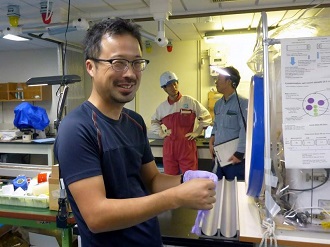
Photo 2. Shipboard microbiologist team leader Hiroyuki Imachi prepares for core processing. (Photo : Maija Raudsepp)
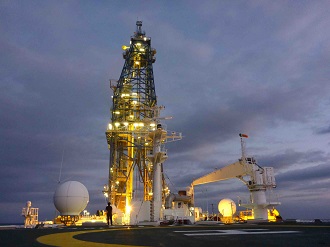
Photo 3. Microbiologist Donald Pan dwarfed by the Chikyu’s 121 m high derrick during an evening break. (Photo : Maija Raudsepp)
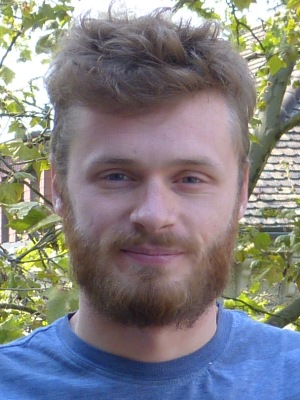 Microbiology (Shipboard)
Lorenzo Lagostina
ETH Zurich /CHE
Microbiology (Shipboard)
Lorenzo Lagostina
ETH Zurich /CHE
Tech-Team power!Oct. 11, 2016
If you’ll have to spend time on sea befriending the cook would be something that will considerably improve your life. But, as Masa already pointed out in a great post a few days ago, this was not needed on the Chikyu, since delicious meals ? for both omnivores and vegetarians ? as wells as fruits and desserts are always ready for you.
If you are a scientist on a research cruise, another thing that could dramatically improve your life is a good team of technicians that supports your work. Technicians play a big part in making your wildest and weirdest scientific dreams comes true even with the short and hectic amount of time onboard. And here on the Chikyu we are definitely spoiled in this matter, as well as for the never-ending ice creams and cakes.
At the time of this writing, 19 technicians are working on the Chikyu, but the technical staff is much larger. In order to keep working 12 hours a day for 7 days a week, around 50 people take turns and shift every 4 weeks between the ocean and land by helicopter. On land they report and document previous expeditions and get ready for future ones. While chatting with some of the technicians, Yuya Hitomi, Yoshiki Kido and Kazuma Takahashi I learned that they very much prefer spending time on board rather than doing paperwork in the Yokohama office.
Their backgrounds are very different, reflecting all the different tasks that they have to perform on the ship. From analytic chemistry to sedimentology and micropalaeontology, they ? together with the rest of team - are responsible for about 40 instruments of all sorts (gas chromatograph, ion chromatograph, multi-sensor core logger, core splitting machines, cryogenic magnetometer, spectrophotometers, 3D X-ray CT scanner, XRD, XRF, microscopes and many more) across two floors of laboratories.
The reasons that motivate them to work far from home for many weeks per year are the uniqueness of the Chikyu and their passion for the Ocean. A slightly higher salary also is a good reason, as everywhere, but it is less satisfactory than knowing that they are contributing to something unique. Every sample taken is special and different from another one, as few ships in the world are dedicated to deep sea drilling research, and every expedition is devoted to find answers to one of the key questions in Earth Sciences.
Kido-san, the sedimentologist now assigned to the geochemistry lab, although happy between the water people (inorganic geochemists), misses the privilege of having the first look on freshly split cores. So sometimes he goes upstairs to have a look at the just split cores. From reading sediments it is possible to reconstruct environments of millions years ago!
The team’s responsibilities, apart from calibrating and maintaining all the instruments, running preliminary tests, preparing reagents, running analysis for busy scientists, helping with data processing, helping with sample curation and cleaning up after messy scientists, is much, much more. A lot of patience is required.
To the questions “How many times have you considered strangling one or more members of the scientific party in the last 7 days?” they took some time to count in their heads but the final answer was “maybe zero”. The question was funny for some reason.
As many other people onboard, what they miss the most during the cruise time is, surprise surprise…beer!
But Takahashi not only misses beer, but misses also the ocean. Weird? Not really if you spend your days surrounded by water as far as your eyes can see and you are not allowed to dive in it!
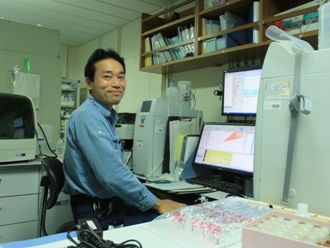
Photo 1. Yoshiki Kido working on cations measurement in the geochemistry lab. (Photo : Lorenzo Lagostina)
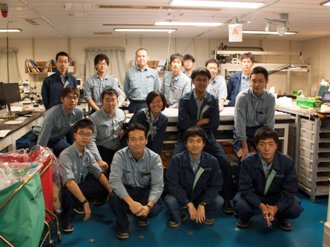
Photo 2. The team present onboard during the 4th week of expedition.(Photo : Lorenzo Lagostina)
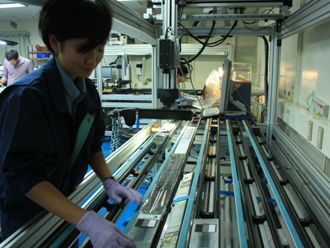
Photo 3. Nagisa Nakao preparing split cores for photography. (Photo : Lorenzo Lagostina)
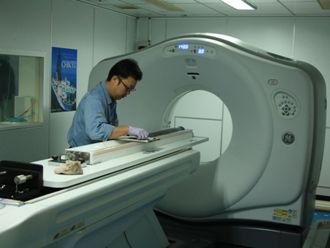
Photo 4. Soichi Moriya preparing a fresh core for the 3D X-ray CT scan. (Photo : Lorenzo Lagostina)
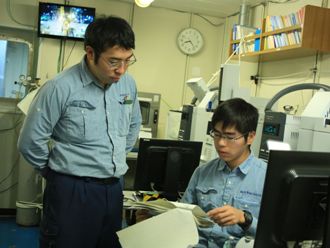
Photo 5. Takehiro Higashi and Kosuke Tsutsumi checking gas chromatographs results. (Photo : Lorenzo Lagostina)
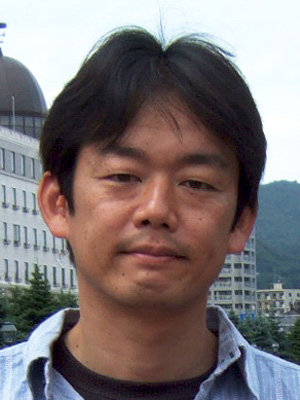 Sedimentology (Shipboard)
Yuzuru Yamamoto
JAMSTEC /JPN
Sedimentology (Shipboard)
Yuzuru Yamamoto
JAMSTEC /JPN
Oct. 10, 2016
Hello, my name is Yuzuru Yamamoto and I work in JAMSTEC. I am attending this expedition as a Sedimentologist and focus on a different topic than biology. One of my research topics for this expedition is the measurement of the stress state in a plate subduction zone. This is a key to understanding the accumulation and release of seismic energy. How can we measure stress on a cored sample? Actually, the volume of core samples increases after coring because they are no longer experienced confining stress. Immediately after core on deck, I put many strain gages on the surfaces of whole-round core section to measure how much and in which direction the core expands (the photo below is from the different expedition). The measurement takes several days, depending on the type of samples. After the measurement, I can convert this change in volume to stress, and get stress states in 3D (magnitude and direction of stress).
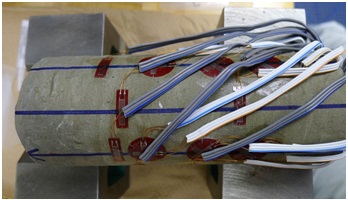
By the way, life on Chikyu is very comfortable. Especially meals, which are one of the great pleasures for scientists and crew. Meals on board are buffet style: there are many different dishes including nice cakes and ice creams… We are always happy for food, but are afraid of getting fat. I am thinking that I should put strain gages on my body and monitor my size…
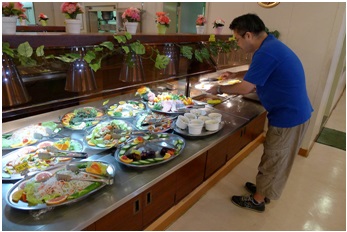
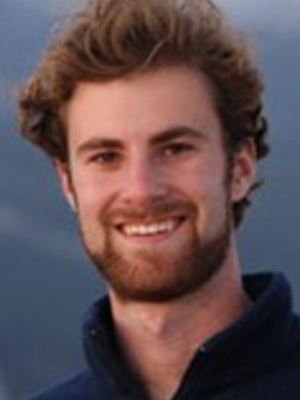 Microbiology (Shipboard)
Kyle Metcalfe
Caltech /USA
Microbiology (Shipboard)
Kyle Metcalfe
Caltech /USA
Sterilized ceramic knivesOct. 10, 2016
The team of microbiologists onboard R/V Chikyu is tasked with processing core material fresh from the borehole in sterile, anaerobic environments. Previous blog posts here have detailed how such conditions are maintained (i.e. using a combination of an air-filtering apparatus and a large plastic bag containing an oxygen-removing device), but here I’m going to talk briefly about an important (and familiar) instrument we use to remove potential contamination from core exteriors: the knife. Using a sterile technique similar to whittling, the microbiology team precisely shaves the outer surface of the cores with a set of sterilized ceramic knives. These specialized knives were selected for their greater hardness than common stainless steel knives as well as the absence of iron contamination while using these instruments relative to their steel counterparts. Higher hardness is achieved in ceramic knives due to their composition: zirconium oxide (ZrO2), the same material used to make imitation diamonds (cubic zirconia). For context, these knives have a Mohs scale hardness of 8.5 compared to 4.5 for typical steel, placing them below ruby and above quartz and topaz. Their greater hardness allows for easier cutting of the lithified muds encountered by the team at depth, and these knives also maintain their sharpness for a longer period of time, useful in the busy environment of the core processing deck. Unfortunately, these knives are brittle, and thus much care is needed to prevent chipping, as shown below. As Expedition 370 goes deeper beneath the seafloor in search of the temperature limit of the deep biosphere, these humble but important instruments will help prevent contamination of our precious samples.
On a lighter note, in recent days a few dozen dragonflies have appeared buzzing around Chikyu to the surprise (and sometimes annoyance) of the crew. Unfortunately the author has been unable to identify the species of dragonfly that has happened upon our drilling operation, but perhaps a person out there more knowledgeable in these matters may be able to identify it!
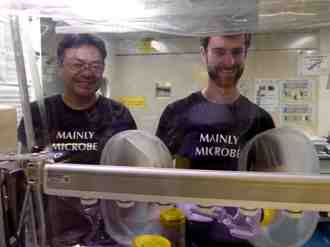
Photo 1. Co-chief scientist Fumio Inagaki discussing core processing with Microbiologist Kyle Metcalfe while working to process samples in an anaerobic glove box equipped with a Koken KOACH system for super-clean working conditions. (photo credit: Verena Heuer)
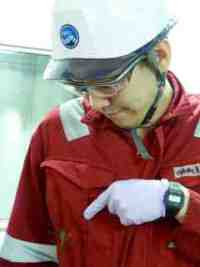
Photo 2. Organic geochemist David Wang hanging out with a friendly member of the Anisoptera (photo credit: Florence Schubotz).
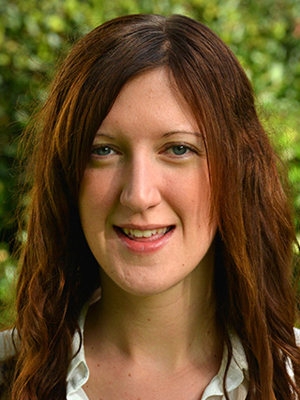 Organic Geochemist (Shipboard)
Hayley Manners
Univ. Southampton /GBR
Organic Geochemist (Shipboard)
Hayley Manners
Univ. Southampton /GBR
Somewhere a winch is turning…Sept. 30, 2016
We are now in to week three at sea and as you can tell from the previous blog posts we are busy collecting, processing and analysing samples as soon as they are delivered to us by the drillers. Everyone has now settled into their shift pattern and various routines that go with this (some are even managing to squeeze in trips to the gym!). However, one thing that strikes me is how easy it is to lose track of time on board the Chikyu. It is such a big ship that you are often without natural light, making it difficult to tell whether it is night or day.
There are several ways in which the Scientists have now come to tell time. One is through the growl of our bellies waiting for their next delicious meal (see Masa’s post for the delights of the food!) and the second way in which we tell time is through a series of TV channels shown on various screens throughout our working area that show us the drilling platform from various angles. This might seem strange at first, but hopefully it will make more sense as you read on. One camera is particularly instrumental in governing our day-to-day routine ? this shows us a winch that is used to lower and raise the coring apparatus (I know, this is getting stranger, not clearer!). This winch has come to be the most reliable time-telling device we have on board (it even looks a bit like a clock, but that may be due to how much time I spend looking at it). If the winch is winding in a clockwise direction, the coring apparatus is being lowered into the hole (i.e. in time-telling language: don’t worry, you have loads of time to prepare for the next core/go grab some food). If the winch is winding in an anti-clockwise direction however, everyone is on alert, rapidly preparing for the arrival of the next core to process and sample. There is a third way we tell time, and that is the arrival of our relief team, ready and raring to take over from those of us who are keen to go and put our feet up in the Jacuzzi and Sauna after a productive shift.

Photo 1. From left to right: The gym, Jacuzzi and sauna area for exercise and relaxation.
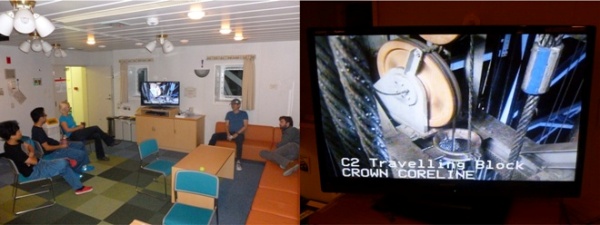
Photo 2. Left: Flo Schubotz, Hiro Imachi, Masa Kaneko and David Wang eagerly “watching the clock”, with Kyle Metcalfe briefly waking from his power-nap check on progress. Right: A close up of Expedition 370s new “clock”
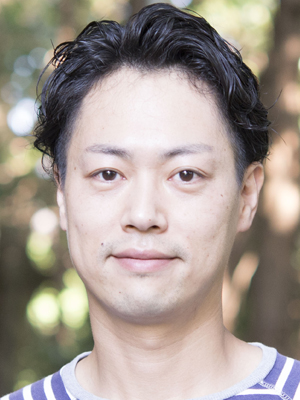 Organic Geochemistry (Shipboard)
Masanori Kaneko
AIST /JPN
Organic Geochemistry (Shipboard)
Masanori Kaneko
AIST /JPN
Daily blissful momentSept. 28, 2016
Now we are spending very exciting time on Chikyu. However, we may feel stress sometime because of less entertainment, no holiday, and no drinking. Mealtime is a very blissful moment for us. It is very helpful to reduce stress and for relaxing. Various kind of food is available in buffet style (photo 1) or you can order special vegetarian’s menu. Surprisingly, raw fish (sashimi and sushi) is also available onboard! Don’t forget to leave dining room (Messroom) for dessert!
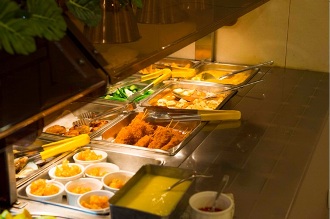
Photo 1. A part of menu (dinner on 28th Sep). We have much more choice. (Photo: Masanori Kaneko).
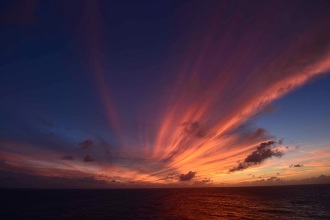
Photo 2. Sunset after dinner on 25th Sep. (Photo: Masanori Kaneko).
 Microbiology (Shore-based)
Emily Whitaker
Texas A&M Univ./USA
Microbiology (Shore-based)
Emily Whitaker
Texas A&M Univ./USA
Sept. 26, 2016
How do you define “clean”? Most of the time for me, clean means not having too many dirty dishes in my kitchen sink. When I’m in lab, my definition of clean is a little stricter.
I am a microbiologist so when it comes to being clean, I need to worry about more than just clutter. In order to make sure that the only bacteria in my samples are the ones that were there in the first place, I need to work in a sterile environment. This means that all the surfaces, chemicals, instruments, and my hands must be clean of all bacteria. This can be achieved easily enough through chemical sterilization or through filtering out bacteria from solutions, but this still overlooks one important thing: what about bacteria in the air? Bacteria are so tiny that they can remain a lot almost indefinitely. Even in a room that looks clean and has sterile surfaces, the air is literally swimming with bacteria waiting to contaminate our samples.
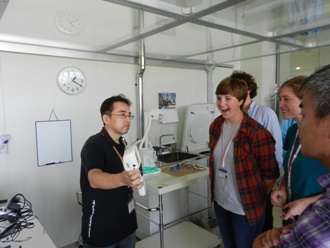
Usually us microbiologists get around this problem by working in a sterile, covered bench that is continually blowing air that has been filtered of bacteria. Here at Kochi Core Center, we have something even better than a clean bench. We have an entire super clean room. This is achieved by continually blowing filtered air from one wall across a room enclosed on three sides. The results are astonishing. We have a sensor that tells us how many particles of different sizes, from dust to bacteria to viruses, are suspended in the air. In the super clean room, the sensor reads zero particles. This means that not a single bacterium is floating around and our samples are safe from contamination.
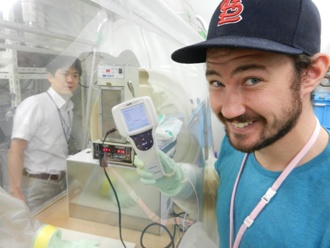
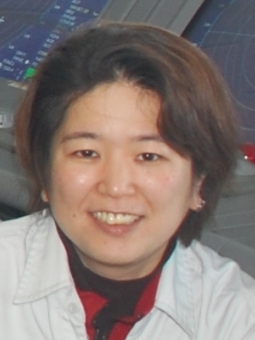 Expedition Project Manager (Shore-based)
Lena Maeda
JAMSTEC/JPN
Expedition Project Manager (Shore-based)
Lena Maeda
JAMSTEC/JPN
Sept. 26, 2016
Six shore-based scientists excitedly gathered at the Kochi Core Center (KCC) on Friday morning on 23 September. The first whole round core samples were already on hand waiting to be processed. These extremely valuable samples started some lively discussions regarding sample treatment, storage, and distribution. The scientists have since reached consensus on sample handling procedures, and are preparing to begin work on the samples themselves.
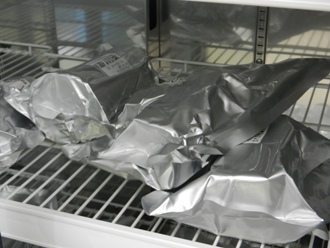
Whole round core samples transported by helicopter are waiting in a refrigerator.
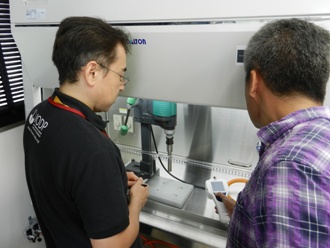
A core drill (one of subsampling tools) is installed in a clean bench to take subsamples without secondary contamination.
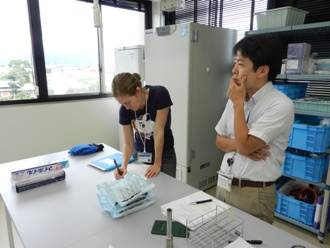
Team "frozen" (Tatsuhiko Hoshino and Margaret Cramm) is checking sample handling plan.
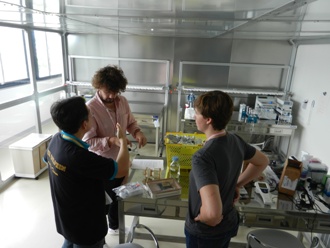
Team "refrigerated" (Harry McClellan and Emily Whitaker) is discussing sample handling plan with co-chief scientist Yuki Morono
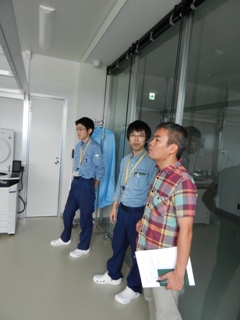
Team "water" (Akira Ijiri) is having a talk with lab technicians.
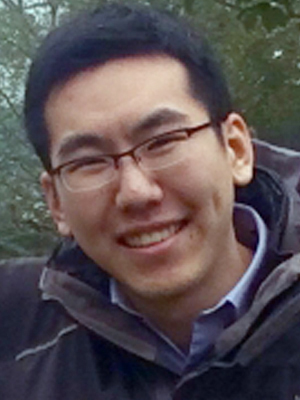 Organic Geochemistry (Shipboard)
David T. Wang
MIT/USA
Organic Geochemistry (Shipboard)
David T. Wang
MIT/USA
Gearing up to go deepSept. 26, 2016
Over the weekend, we completed the last of our soft sediment coring operations. In preparation for drilling into deeper and harder sediments, the drillers are swapping the bottom-hole assembly (BHA) from one compatible with piston or spring-loaded coring systems (used in softer, shallower sediments) to one equipped for rotary coring, which enables penetration into and recovery of high-quality cores from compacted sediments and rocks. The BHA is the part at the business end of the drillstring, which means a lot of activity on the rig floor to retrieve the old BHA and install the new one. The drill crew’s jobs are made a bit easier by the large specialized machinery that perform the physical making up/breaking out and racking/unracking of miles of pipe at extraordinary speed. The Chikyu, and the technologies she and other drillships carry, are floating testaments to human ingenuity and the vision of countless engineers and craftspeople through the past century and a half.
While the drill crew has been busy moving lots and lots of pipe, the scientists have gotten a chance to take a breather and catch up on some much-needed sleep. Our first set of time-sensitive samples was delivered via helicopter to the shore-based team, where they are hard at work performing cell counts and extracting genetic information in ultra-clean laboratories at the Kochi Core Center. We have also been keeping busy analyzing the data and samples from the shallower units, and discussing new and old ideas about the geology, geochemistry, and biogeochemistry of the Nankai Trough.
By now, we are well-settled into our work shifts?half of us are on duty at night between 00:00 and 12:00, and the other half on duty from 12:00 to 24:00, with a daily science briefing and crossover meetings around noon. One of the advantages of the night?or “early”?shift is getting to catch spectacular views of daybreak after breakfast (or is it lunch?). We also enjoy the dubious benefit of being greeted with “good morning” by the day shift scientists both when we begin work and when we end our day. Although it has only been two weeks?including a short typhoon break?, we have already made it several hundred meters into sediments with features both familiar and new. The entire science party is excited for the next few weeks, when we go deep and hot, and get to meet the microbes (if any) who live down there!
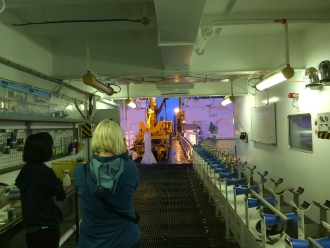
Photo 1: Paleomagnetist Natsumi Okutsu (far left) and organic geochemist Florence Schubotz take in the view from the catwalk at dawn. The HydraRackerR, Hydralift? iron roughneck, and drill pipe are illuminated in the glow of the rising sun. (Photo: D. T. Wang)
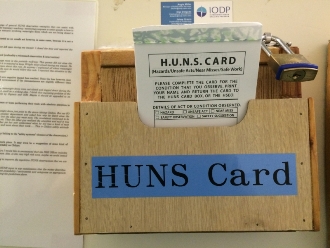
Photo 2: Subseafloor drilling operations can involve risks of many types. We have two diligent and friendly dedicated Health, Safety, Quality, and Environment officers onboard, but on a vessel the size of Chikyu, they alone cannot monitor and manage everything that happens. It is everyone’s responsibility to keep the ship and those onboard safe. As part of the Chikyu’s commitment to safe and efficient operations, all personnel are encouraged to report observations regarding unsafe work behaviors or potential hazards, via these H.U.N.S. cards. The safety officers review over a dozen submitted cards every day, and follow-up where necessary. (Photo: D. T. Wang)

Photo 3: International and inter-shift competition and collaboration taking place in the laboratory lounge during the lull before beginning our rotary coring campaign. At left, organic geochemist Masanori Kaneko (batting, day shift) and microbiologist Kyle Metcalfe (fielding, night shift) face off in a friendly game of tabletop baseball, while sedimentologist Satoshi Tonai (umpire) officiates. At right, organic geochemist Bernhard Viehweger (night shift) and microbiologist Lorenzo Lagostina (day shift) are hard at work reviewing quality control procedures and data from the first week of drilling. (Photo: D. T. Wang)
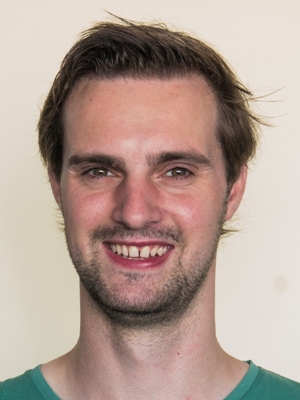 Organic Geochemistry (Shipboard)
Bernhard Viehweger
MARUM, Univ. Bremen / DEU
Organic Geochemistry (Shipboard)
Bernhard Viehweger
MARUM, Univ. Bremen / DEU
Core flow ? getting into a routineSept. 24, 2016
After a very exciting 20th September, which included the retrieval of our first core, the processing of it during a typhoon and a birthday party, things went back to normal on board. While “normal” often means “boring”, here it means really exciting for us scientists, as drilling operations could be continued. And as a little bonus, we were rewarded with a beautiful sunrise on the Heli Deck (Photo 1) on the 21st September.Since then, the cores have arrived regularly on deck and besides getting quicker every time, we sometimes had just finished, when the next “core on deck” announcement was broadcasted.
First place a freshly taken core goes from the rig floor, is along the so called “catwalk” to the core cutting area, where it is cut in sections by a team of technicians. Core liner fluid is collected by sedimentologists for a broad range of quality control tests. Always on the catwalk is one or both of the shipboard co-chief scientists (Verena Heuer, Fumio Inagaki) as well as an organic geochemist to take a sample for safety gas monitoring. Afterwards, the core is transferred to the core processing areas and the individual sections are scanned with a x-ray CT, similar to the one you would find in a hospital, in order to investigate the core structure and identify the best places for sampling.
And from there on starts a long chain of processing in the laboratory decks. Sections are cut into either, whole round cores by microbiologists onboard (Photo 2), or in a working and archive half by the technicians. While the inorganic geochemists try to squeeze out some invaluable pore water from short whole round cores for their analysis, the archive half is delivered to sedimentologists for a lithological description. The working half goes first to physical property specialists and a paleomagnetist, for some initial tests. Afterwards the “flagging” starts, where one can literally place flags next to the core halves to mark the sampling spots for personal samples. I will stop here, before it gets too lengthy, but of course there are many more processing steps and onboard analyses performed than I can describe here. Another major news is that the third co-chief scientist Yuki Morono and our on-shore team members have joined us officially on the 23rd September. They are located at the Kochi Core Center with a super-clean room facility and will receive key samples by helicopter transport for processing under the best conditions possible. During a short video call we were all able to welcome each other and are glad that we have such a capable team in Kochi to work with us.
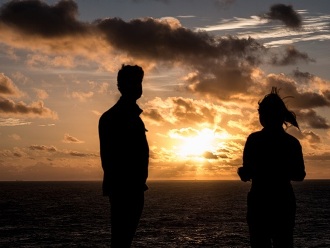
Photo 1: Scientist enjoying the beautiful sunrise on the Heli Deck the day after the typhoon. (Photo taken by: Bernhard Viehweger)
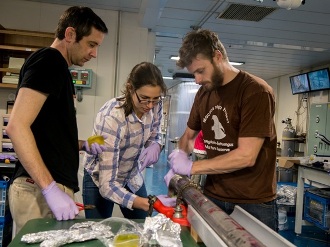
Photo 2: Cutting of whole round cores by shipboard microbiologists Maija Raudsepp (middle), Lorenzo Lagostina (right) and Sedimentologist Stephen Bowden (left). (Photo taken by: Bernhard Viehweger)
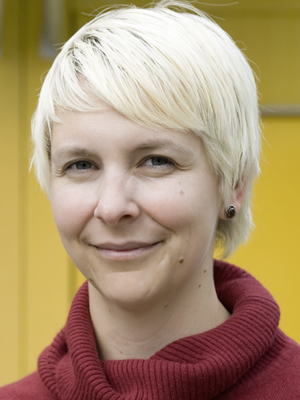 Organic Geochemist (Shipboard)
Florence Schubotz
MARUM, Univ. Bremen / DEU
Organic Geochemist (Shipboard)
Florence Schubotz
MARUM, Univ. Bremen / DEU
The first core, a birthday and then a typhoon!Sept. 20, 2016
It’s almost 12 am and the night shift is eager to start it's 12-hour shift. The next couple of hours will be a race against time: we are planning to recover our first cores below 180 m sediment depth and we are hoping to do this before the scheduled impact of the typhoon Malakas that is heading straight our way! The last days have been very busy for all the scientific teams as everyone has been preparing their equipment and sampling tools to be ready before the first core arrives. Also the expedition leaders have a lot to coordinate to make sure that everyone will receive their requested samples.
“Core on deck!” It is now 8:10 am and the waiting has paid off ? the announcement that the first core has arrived safely for sampling makes everyone very happy, relieved and excited all at the same time. While sedimentologist Man-Yin Tsang and the co-chief scientists Verena Heuer and Fumio Inagaki are inspecting the core, organic geochemists Bernhard Viehweger and David T. Wang are preparing to take gas samples for safety monitoring and scientific purposes. It’s also Bernhards birthday today and one of his presents will be to take the very first gas sample of this expedition!
After inspection of the core in the X-CT scanner, the sampling of the core can begin and it is now the task of the microbiologists to split whole round core samples among the different scientists so they can be further sub-sampled or packed away for shore-based analyses. Some of these analyses are very time-sensitive in order to ensure that conditions are kept the way they are thousands of meters below us. Therefore, everyone is working as diligent and as quick as they can to work up these precious samples. After the time-critical samples are sampled or safely stored away, the core is then split in half and is ready for detailed characterization by the sedimentologists ? but first, let’s celebrate! A birthday cake is waiting for Bernhard in our lounge area and everyone is happy that we managed to sample our first core of the expedition before the typhoon forced us to stop the drilling operation.
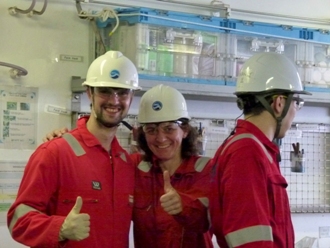
Birthday boy and organic geochemist Bernhard Viehweger and co-chief Verena Heuer are very happy after the first successful core retrieval (Photo: Florence Schubotz)

The ship-board science party is celebrating Bernhard Viehwegers birthday in the lounge area while he is cutting his cake (Photo: Verena Heuer)
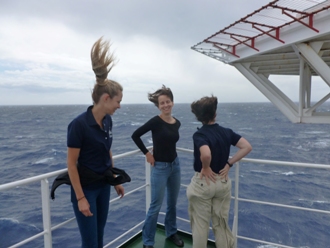
Inorganic geochemists Justine Sauvage, Susann Henkel and Kira Homola (from left to right) are enjoying the fresh breeze caused by the typhoon Malakas (Photo: Hayley Manners)
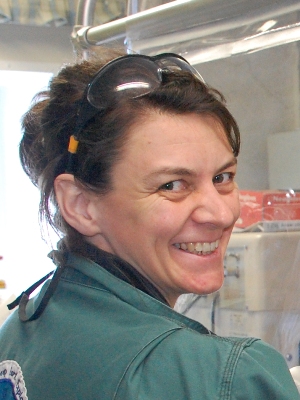 Co-chief Scientist (Shipboard)
Verena Heuer
MARUM, Univ. Bremen / DEU
Co-chief Scientist (Shipboard)
Verena Heuer
MARUM, Univ. Bremen / DEU
First core on deckSept. 20, 2016
On September 17, I announced that once the casing is set, we would start coring. Today at 08:15 am the first core of IODP Expedition 370 arrived on deck! You might wonder why it took us three days to get there. The reason is that each drilling operation requires a suitable, special drill bit at the end of the drill pipe. In other words: the crew had to completely disassemble the 4.7 km long drill pipe in order to take off the cutting unit (drillers call it “bottom hole assembly” or simply BHA) that was used to set the casing. Then, after replacing one BHA with another that is used for coring operations, they put together 4.7 km of drill pipe again, tested tool functions, lowered the underwater TV to find the hole-opening at the seafloor, and then finally re-entered Hole C0023A for coring.
Everyone was very excited about the first core. Chances to probe the deep subseafloor are relatively rare. All Earth scientists that I know have tremendous respect for the samples that were recovered by the Deep Sea Drilling Program (DSDP, 1966-1983), Ocean Drilling Program (ODP, 1983-2003), Integrated Ocean Drilling Program (IODP, 2003-2013) and its successor, the on-going International Ocean Discovery Program (IODP, since 2013). This is even more the case for microbiologists and geochemists, who need to prepare and preserve their samples for shore based analysis in special ways. For this group of scientists, the opportunity to sail and make sure that their samples are treated exactly the right way is too valuable for words. It’s almost like retrieving the first sample from the moon ? that one perfect sample can change everything. Finally, I would say that the respect for IODP samples further increases if one experiences the effort involved in drilling, especially if the sea gets rough.
Today, with the first core of our expedition, we have successfully tested a new tool that is designed to take short high quality cores from firm sediments in great depths. It’s called “short advance modified hydraulic piston coring system”. The 1.5 m long core liner was completely filled with sediment. We sampled it according to the scheme that we carefully elaborated during the first week of the expedition. Overall, we took 57 different types of sample, ranging in size from up to 1.5 liter large samples of wet sediment, that will be further split in the super-clean lab at Kochi Core Center and shared by several investigators, to a pore water sample as tiny as 50 microliters (just like a tear drop), that will be used for on board analysis of sulfate and chloride concentrations. The scenery in which we retrieved and sampled our first core was impressive, too: typhoon Malakas passed our site and let the wave height rise to more than 11 meters. The Chikyu had to go on stand-by for coring operations until the swell got smaller again, but thanks to its great stability we could keep going in the lab.
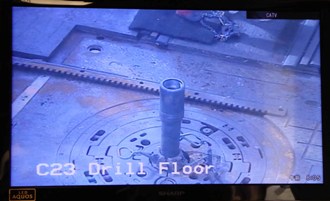
The camera of the drill floor shows that the drill pipe is opened for recovering the first core on deck (Photo: Verena Heuer)
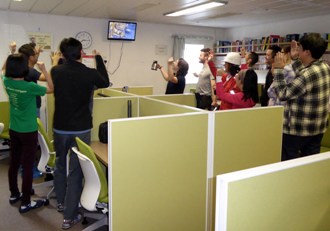
Scientists get up from their desks to celebrate the arrival of the first core (Photo: Verena Heuer)
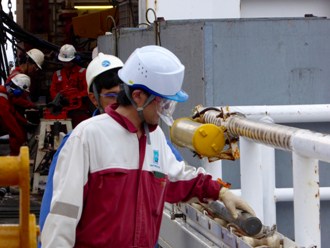
The first core of IODP Exp. 370 is transferred from the rig floor to the core cutting area in the research section (Photo: Verena Heuer)
 Co-chief Scientist (Shipboard)
Verena Heuer
MARUM, Univ. Bremen / DEU
Co-chief Scientist (Shipboard)
Verena Heuer
MARUM, Univ. Bremen / DEU
The short history of a new IODP SiteSept. 17, 2016
On September 17, IODP Site C0023 was opened at 32° 22.0‘ N, 134° 58.0‘ E when the drill bit of DV Chikyu jetted into the seafloor at 08:05 am. Our operations at this site start with the installation of casing in the upper 180 m of the seafloor. The casing is necessary to build a stable borehole. Once it is set, we will start coring.
At the moment, there is time to stop and catch my breath: the T-Limit project is taking place only 42 months after the idea was born on April 23, 2013. At that time, nearly 400 scientists from 20 nations met during the Chikyu+10 Workshop in Tokyo to discuss high-priority science projects requiring the use of scientific ocean drilling for the next decade. Inspired by the brand-new findings of IODP Exp. 337 Shimokita Deep Coalbed Biosphere in 2012, co-chief scientists Kai-Uwe Hinrichs (MARUM Center for Marine Environmental Research at the University of Bremen) and Fumio Inagaki (JAMSTEC) came up with the idea to study the bottom of the deep biosphere at a place where geothermal heating during sediment burial lets temperatures rise above 120°C, the highest known temperatures at which life has been found to exist to date. Looking for a place to address their research questions, they found that the Nankai Trough off Muroto, Japan, would be ideally suited. In this part of the subduction zone, the heat flow is particularly high and sediment temperatures are expected to exceed 120°C at a depth of only 1.2 km below the seafloor. Moreover, this area has been investigated by scientific ocean drilling before, and the existing data sets allow for a well informed, focused drilling and research approach.
Back at home, Kai and Fumio started to call their colleagues and asked me if I would like to join in as one of the lead-proponents. Of course I said “yes”! I have been working with Kai in the Organic Geochemistry Group at MARUM/University of Bremen since 2004 and first met Fumio in that same year during IODP Expedition 301 at the Juan de Fuca Ridge. All three of us sailed together on DV Chikyu during IODP Expedition 337. I was thrilled by the perspective to continue the long journey of great discoveries in scientific ocean drilling with the two of them.
In the following year, we collaborated with 22 co-proponents and developed a full “T-LIMIT” drilling proposal that we submitted to IODP for the April 1 deadline in 2014. Our proposal was reviewed together with many others by IODP's Science Evaluation Panel (SEP), which meets twice a year to evaluate and rank drilling proposals for future IODP expeditions. Since panel members come from a wide range of disciplines, they also provide invaluable input to proposals that helps to maximize the scientific return of an expensive expedition. In our case, SEP members pointed out that the proposed borehole could also contribute to a better understanding of heat and fluid flow in the Nankai subduction zone. Since heat and fluid flow are closely related to our primary research goal to understand the impact of temperature on the deep subseafloor biosphere, we were grateful for the suggested additions, contacted colleagues who are experts in this field, and incorporated plans for a borehole observatory that will return high-resolution temperature measurements. In January 2015, the SEP was happy with the overall concept and forwarded our proposal to the Chikyu IODP Board (CIB).
The CIB meets once a year to plan Chikyu expeditions. When it gathered in March 2015, it recognized the importance of the T-LIMIT proposal and decided to establish a Project Coordination Team to prepare its implementation. Upon this news, we were all delighted that our project was moving ahead very smoothly. Still it took us by surprise when at the following CIB meeting in March 2016, IODP Expedition 370 was scheduled to start as early as September 11, 2016. This left us with a lead-time of less than 6 months for recruiting the scientific party and managing all expedition logistics…! A comparison with other IODP expeditions will provide an idea of the scale of the task: Exp. 370 takes place a full year prior to Exp. 369, for which the call for applications to sail on the DV JOIDES Resolution was opened in June 2016.
We are moving ahead very fast, and I would like to acknowledge the great efforts of all shipboard and shore based staff involved in DV Chikyu operations. Moreover, I would like to thank all expedition scientists for their great flexibility, especially those who have managed to rearrange the dates of their lectures and cancelled other appointments in order to join this expedition. Dear colleagues, it's great to know that you are ready to jump in and race with us for new discoveries at any time. Here we go!
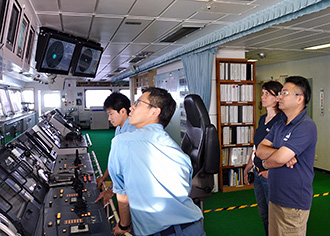
The co-chief scientists of Expedition 370, Fumio Inagaki and Verena Heuer, are watching the drill bit jetting in at Site C0023 while DP officers are keeping Chikyu on the spot with dynamic positioning system (Photo: Yusuke Kubo)
 Co-chief Scientist (Shipboard)
Verena Heuer
MARUM, Univ. Bremen / DEU
Co-chief Scientist (Shipboard)
Verena Heuer
MARUM, Univ. Bremen / DEU
Scientists are getting ready for coresSept. 16, 2016
During the last three days, all shipboard scientists have presented their research questions and explained what kind of samples they need in order to answer them, while the drilling crew has been assembling 4.7 km of drill pipe to reach the seafloor at our target site. We have explored the manifold reasons that make the Nankai Trough an extremely interesting place to study - not only for geologists who are interested in mountain building processes and earth quakes but also for geochemists and microbiologists who are searching for traces of intra-terrestrial life in an environment that with depth might little by little be getting too hot and too hostile even for microorganisms that can live at temperatures above 85°C. Everyone is excited about the potential scientific outcome of the expedition. Currently, the shipboard scientists are discussing how they can best collaborate during both the expedition and their post-cruise research, and the co-chief scientists, expedition manager and curators are reviewing sample requests for more than 60 individual research projects. Even in the best case of full core recovery, the sample volume and time for core processing will be limited and therefore each sample request needs to be evaluated very carefully. We have been busy organizing the distribution of the precious core samples and the workload of shipboard analyses and sampling in the best possible way. We are now confident that everything will be set up before the first core arrives on deck. - We are ready to go!
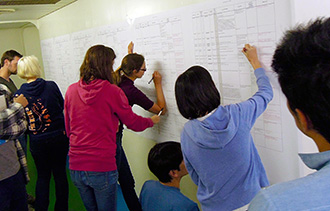
The curator (right) is watching Expedition 370 scientists while they are discussing and revising their personal sample requests (Photo: Takehiro Hirose)
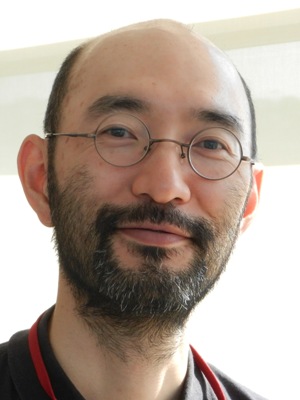 Expedition Project Manager (Shipboard)
Yusuke Kubo
JAMSTEC / JPN
Expedition Project Manager (Shipboard)
Yusuke Kubo
JAMSTEC / JPN
Chikyu departed Shimizu portSept. 13, 2016
After 3 days of port call, Chikyu has finally departed Shimizu port today, a day after the boarding of the shipboard team scientists. The scientists have been taking part in a series of induction meetings and unpacking their luggage to settle down in their offshore home for the coming 2 months. We will be arriving on site after a day of transit.
As the drilling operation starts with casing installation, there will be more than a week before we will receive the first core in the expedition. We will be having meeting to get familiarize ourselves with the expedition's scientific objectives, research and sampling plans of all and each of the science party members, and laboratory protocol of the shipboard analysis. The shipboard team members are fresh, highly motivated and ready to sail. So, it is time to say, “ladies and gentlemen, start your engines!”
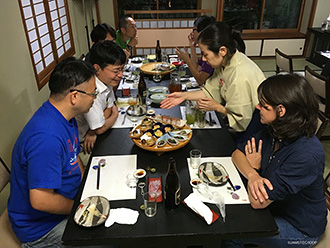
Co-chief scientists Fumio Inagaki (left) and Verena Heuer (right) observe the appetizer in the last onshore dinner before departure.
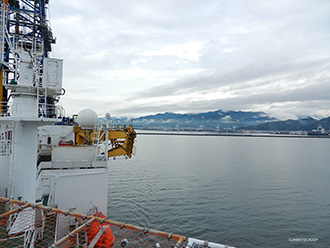
Chikyu left Shimizu port in the morning on Sep 13.















